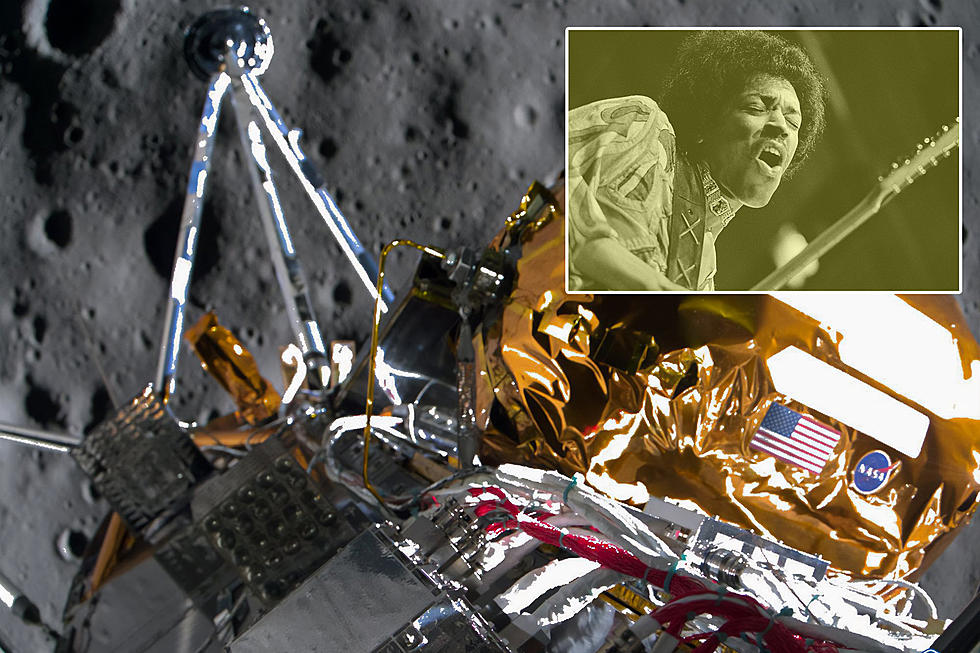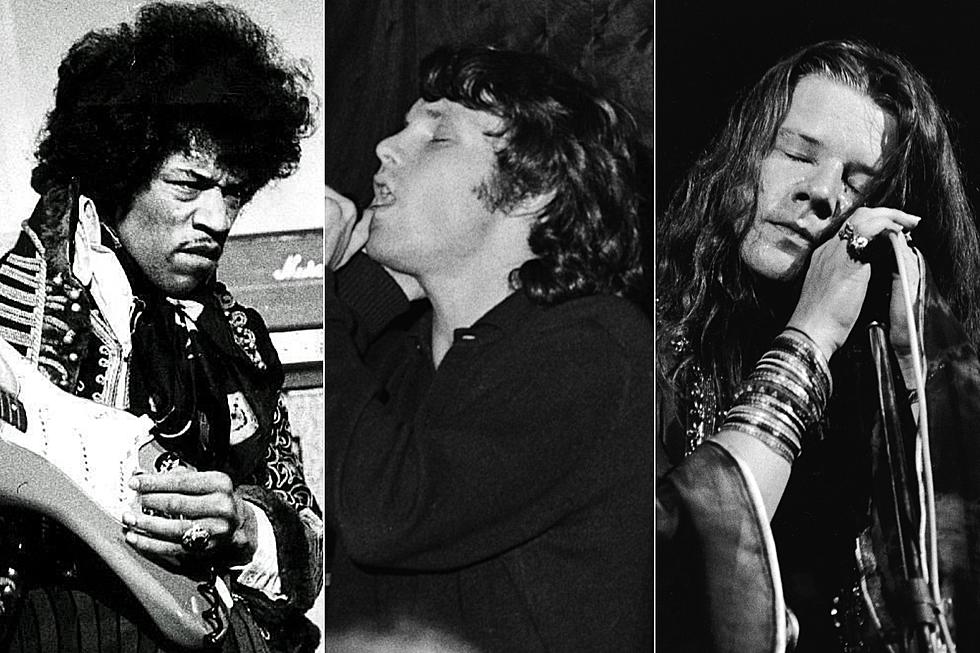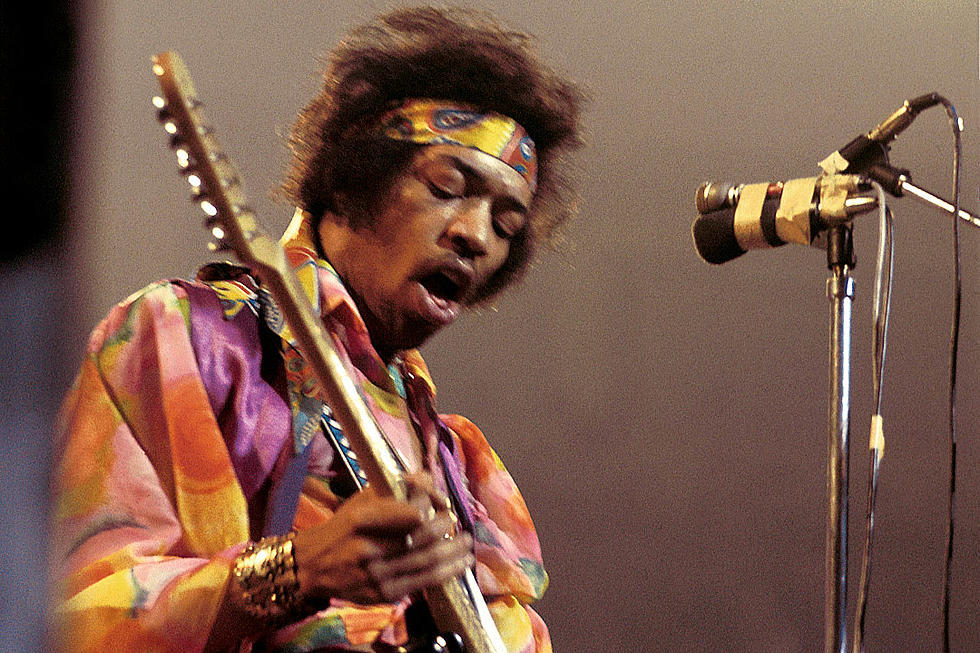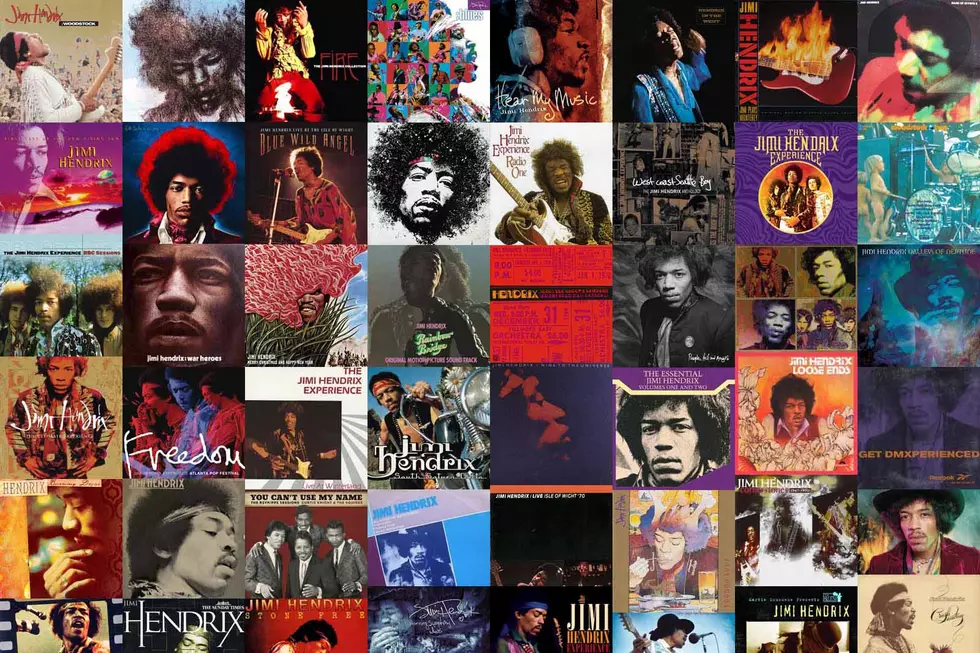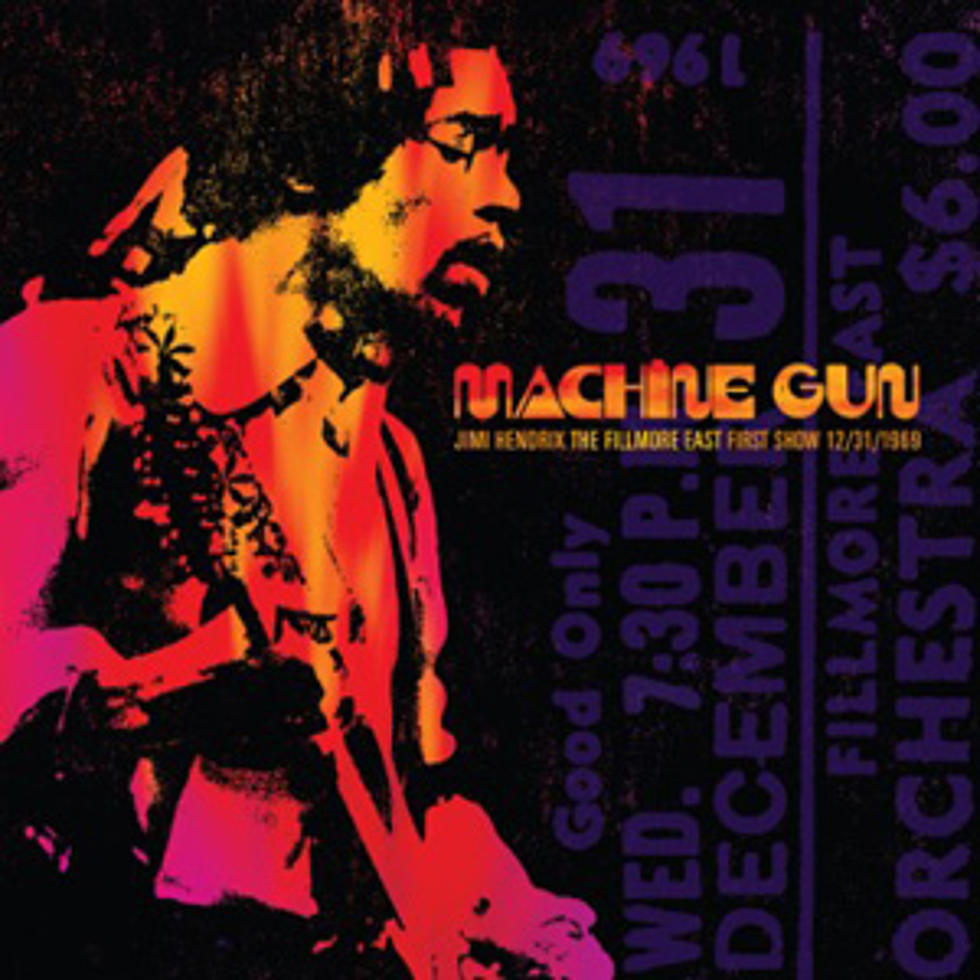
Jimi Hendrix, ‘Machine Gun: The Fillmore East First Show 12/31/69′: Album Review
Jimi Hendrix didn't waste much time pulling together a new trio after the Experience broke up in June 1969. He started playing with bassist Billy Cox earlier that year, and in September, drummer Buddy Miles joined them. By December, the group – called Band of Gypsys – was ready for its first gig.
The band debuted with four shows over two nights, Dec. 31 and Jan. 1, at New York's Fillmore East. Six songs from the New Year's Day concerts were chosen for the Band of Gypsys album released in March 1970, and after one more show, the group dissolved.
Machine Gun: The Fillmore East First Show 12/31/69 collects the band's first-ever performance, all 11 songs in 71 minutes, and it's a telling but occasionally rough document of Hendrix taking his career to the next stage. Was the trio making things up as it went along? Probably. But that swing-and-miss approach is what separated Band of Gypsys from the Experience.
Hendrix wanted that break from his past. All of the songs he and his new band played onstage were never heard before and didn't see release in studio versions until after his death in September 1970. And unlike the more era-stamped songs he played with the Experience, the Band of Gypsys cuts were darker and more open-ended.
Hendrix was always about the blues, but with Gypsys, and on the tracks he was working on before his death (and which have surfaced on many posthumous records), he went deeper, probing Elmore James' "Bleeding Heart" with burning intensity while carrying its aesthetic to his new songs, like "Hear My Train A Comin'," "Ezy Rider" and "Earth Blues."
The band's first performance is spotty at times -- you can hear them getting a sense of each other's playing, as they tentatively step around notes and solos. But on Machine Gun's best songs -- the opening "Power of Soul," a ferocious "Hear My Train A Comin'" and a first crack at the epic title track -- they fall together like three guys who've played together for years.
The original Band of Gypsys album remains the definitive, if abridged, document of these concerts, but this full-show chronicle of their first-ever appearance holds historical significance, even if most of the songs later ended up in better versions elsewhere. They reflect Hendrix's creative restlessness and prolific output during a period that never had a chance to yield another studio record in his lifetime. Machine Gun: The Fillmore East First Show 12/31/69 isn't perfect, but this uneven and often rugged set captures the raw heart at the center of the Gypsys.
See Jimi Hendrix and Other Rockers in the Top 100 '60s Rock Albums
More From Ultimate Classic Rock

